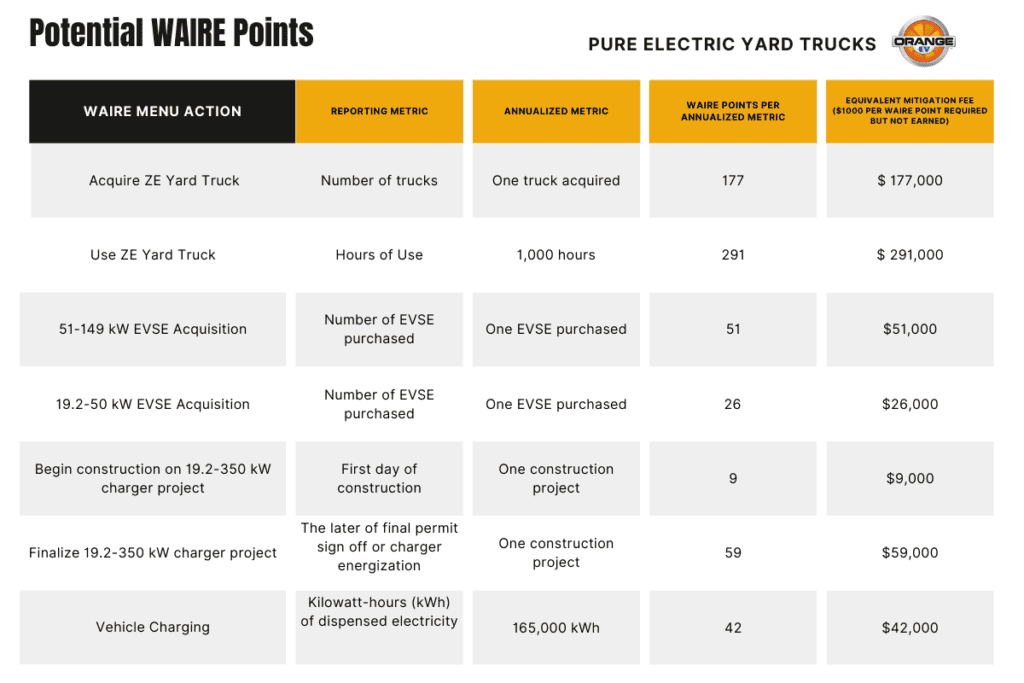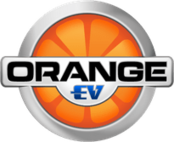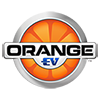The Warehouse Indirect Source Rule (ISR) 2305
How it impacts your business, and what you can do to mitigate fees.
Rule 2305 – also known as the Warehouse Indirect Source Rule (ISR) or the Warehouse Actions and Investments to Reduce Emissions (WAIRE) Program – is a first-of-its-kind air quality law in the South Coast Air Quality Management District (SCAQMD), passed by the SCAQMD board on May 7, 2021.
The Warehouse ISR aims to reduce NOx and diesel emissions, reduce air pollution, and ensure cleaner air and higher air quality within the SCAMQD area. The South Coast AQMD covers more than 6,700 square miles and generally includes Orange County, western San Bernardino County, western Riverside County including the Coachella Valley, and southern Los Angeles County.
What’s different about Rule 2305?
Rule 2305 is unique in a couple of ways. First, rather than regulating the vehicles that emit pollutants, the rule regulates warehouses designated as indirect sources of emissions for the polluting vehicles they attract.
The rule also creates a unique points system for valuing and tracking emission reduction activities. Warehouse operators affected by Rule 2305 must earn a specified number of WAIRE points each year which are calculated based on the number of truck visits to that warehouse in one year. Failure to accumulate the required points may result in mitigation fees which, set at $1,000 per point, can run into millions of dollars.
If you own or operate a warehouse in the South Coast AQMD, you need to be aware of the Warehouse ISR, understand your WAIRE points obligation, and take steps to earn WAIRE points.
Is your business prepared?
Which businesses in Southern California does WAIRE apply to?
The WAIRE program affects owners and operators of warehouses that are at least 100,000 square feet and located within the South Coast Air Quality Management District. The program is being phased in over three years, starting with the largest facilities.
Affected warehouse owners needed to submit an initial Warehouse Operations Notification (WON) by September 1, 2021. Going forward, owners are required to submit a WON only if there’s an operator change or renovations to the facility that change the square footage. Owners may earn WAIRE points and they may transfer the points to operators, but are not required to do so.
Affected warehouse operators must submit an Initial Site Information Report (ISIR), earn WAIRE points, and submit annual WAIRE Reports (AWRs). The AWR must be submitted annually by January 31 of the year following the compliance year. The phase-in started with warehouses larger than 250,000 square feet. For these businesses, the first AWR was due January 31, 2023, although that deadline was extended to March 2, 2023, due to technical issues.
The phase-in, by square footage, progresses as follows:
-
- 250,000: ISIR due July 1, 2022; AWR due January 31, 2023.
- 150,000 to < 250,000: ISIR due July 1, 2023; AWR due January 31, 2024.
- 100,000 to < 150,000: ISIR due July 1, 2024; AWR due January 31, 2025.
How does the WAIRE points system work?
First, each operator must determine their annual WAIRE Points Compliance Obligation (WPCO) to know how many points they’re required to earn each year. This number is calculated based on the number of truck visits to the facility in one year, although it’s important to note that even if the number of truck visits remains the same year over year, an operator’s WPCO will increase annually for at least the first three years as the system is phased in using defined annual variables. Points may also increase if the stringency (another variable in the WPCO equation) is increased – more on this in the next section.
Generally, warehouse operators earn points for taking specified actions that reduce emissions. Points can be accumulated in several ways as laid out in the rule’s WAIRE Menu (located on the last page of Rule 2305). This includes having zero and near-zero-emission trucks visit the warehouse, installing onsite solar panels, or installing MERV 16 or greater filters, or filter systems in various community buildings. One of the most straightforward and effective ways operators can earn points and avoid mitigation fees, however, is to operate high-quality zero-emissions vehicles like Orange EV electric yard trucks at the warehouse site, acquired through purchase, lease, or rental.
Potential WAIRE points for Orange EV yard trucks:

Operators also have the option to earn points through a custom WAIRE plan. Applications for custom plans are due more than nine months before the annual WAIRE report (AWR) is due.
At the end of the compliance year, businesses that have failed to acquire enough points will be assessed a mitigation fee. Taking direct action to accumulate points by buying, leasing, or renting Orange EV electric yard trucks is one of the best ways to avoid such fees, and directly contribute to improved air quality in the SCAQMD (generally including Orange County, western San Bernardino County, western Riverside County including the Coachella Valley, and southern Los Angeles County).
The mitigation fees collected by the WAIRE program will be used to provide purchase incentives for zero-emission trucks, charging, infrastructure, and for near zero-emission trucks. Warehouse operators may be able to apply for these funds when they become available, although there will be restrictions: WAIRE points can only be earned for the use of funded equipment (not the purchase of said equipment), and funded charging/infrastructure must be publicly accessible. Details regarding these incentives are still TBA.
How do I know how big my mitigation fee might be?
To calculate the WAIRE Points Compliance Obligation (WPCO), a warehouse operator must first determine their Weighted Annual Truck Trips (WATTs) which is the sum of Class 2b to 7 truck trips plus 2.5 times the number of Class 8 truck trips.
WATTS = (Class 2b to 7 truck trips) + [2.5 x (Class 8 truck trips)]
One trip counts as a truck entering or leaving the warehouse site. Rule 2305 allows for many ways this data can be collected, requiring only that the methods used “provide a verifiable and representative record.”
The WPCO calculation, then, is WATTS multiplied by both the annual variable and the stringency.
WPCO = WATTS x Annual Variable x Stringency
The annual variable is a fraction that ramps up by one-third each year, set at 0.33 in the first compliance period, then 0.67 in the second period, and finally 1.0 in the third year. As a result, the required points increase each year over three years. While the stringency is currently set at 0.0025, it could be increased in the future. Once the WPCO has been calculated, operators determine potential mitigation fees by multiplying WPCO by $1,000. As an example, if your annual points obligation is 625, the mitigation fee levied would be $625,000 if no points were earned over the compliance period.
Affected warehouse operators in the South Coast AQMD can use the WAIRE program’s handy calculator to estimate their WPCO.
When should I start earning WAIRE points?
Start earning WAIRE points now! You can do this by taking actions and making investments during the specified compliance period. To earn the required points for 2023, WAIRE actions must be taken January 1 through December 31, 2023, though there are a few nuances:
Action may be taken early, before an operator is required to earn points. Any WAIRE points earned before the first compliance period may be banked and transferred for up to three years after the first required compliance period.
Since points requirements will increase annually over three years, and excess points earned in one year can be carried over to meet the WPCO in any of the following three years, it makes sense to start earning as soon as possible.
Are there exemptions to the Warehouse ISR?
There are a few exemptions from Rule 2305. Warehouse operators using less than 50,000 square feet in a single building are exempt, as are operators with a WAIRE Points Compliance Obligation (WPCO) of less than 10 during a single compliance period. In the latter case, operators must document their WPCO and exemption in their Annual WAIRE Report. Operators may also apply for an exemption if they’ve taken appropriate measures to earn points but, due to circumstances beyond their control, are unable to fully comply.
What’s the best way to avoid mitigation fees?
Operating zero-emission yard trucks, acquired by purchasing, leasing, or renting from a proven and trusted manufacturer like Orange EV, is of the best ways to earn WAIRE points and avoid mitigation fees.
How much can operating just a single Orange EV truck save your company?
Let’s start with rentals. Renting an Orange EV truck may cost an operator roughly $9,000 per month, but operating that rented truck for 250 hours during one month earns 72.7 WAIRE “Use” points per month, equivalent to $72,700 in WAIRE mitigation fees. After subtracting rental costs, that’s $63,700 per month in potential savings. In the first month, savings would be less due to one-time costs from shipping and infrastructure.
In general, using a zero-emission yard truck earns 291 WAIRE points per 1,000 hours of operation. So, whether you rent, lease, or purchase an Orange EV truck, the more you operate it, the more WAIRE points you earn and the more money you’ll save. Moderate use of 3,000 hours a year earns 873 WAIRE points worth $873,000 in possible mitigation savings, while heavy use of 6,000 hours annually earns 1,746 WAIRE points, equivalent to $1,746,000 in potentially avoided mitigation fees.
Orange EV yard truck rentals are available in 48 states, delivering a turnkey solution that includes truck, charger, training, and more. To learn more about renting from Orange EV, contact our rental team.
What does it mean to “acquire” an Orange EV truck and how many WAIRE points does that earn?
Under the WAIRE program, up to 177 points can be earned when a warehouse operator acquires a zero-emission Orange EV yard truck either through purchasing, leasing, or renting. These “Acquire ZE Yard Truck” points can only be earned once per truck, and purchasing one Orange EV truck earns the full 177 WAIRE points. If leasing or renting and the contract spans more than one compliance period, the “Acquire” points will be pro-rated accordingly over each compliance period, up to 177 points maximum if the contract is at least one year.
Can I earn WAIRE points for installing a charger and charging the truck?
Significant points can be earned for acquiring and installing the necessary charging cabinets. The multiple “EVSE” actions total 94 WAIRE points for Orange EV’s 22 kW charging cabinet, and 119 points for the 70 kW option.
How can you earn 119 points for installing one Orange EV 70 kW Fast Charging Cabinet?
The points break down as follows:
-
- 51 points: Acquire 51-149kW charger
- 9 points: Begin construction on 19.2-350kW charger project
- 59 points: Finalize 19.2-350kW charger project
Additionally, you can earn 42 points per 165,000 kWh of dispensed electricity for charging zero-emission yard trucks.
What do all the ZE yard truck-related WAIRE points add up to?
In total, an Orange EV standard duty truck with enhanced charging operated 4,000 hours per year could earn 1,441 total WAIRE points for truck acquisition, truck use, charger installation, and electricity use.
In a heavy-use scenario, operating one Orange EV extended duty truck with fast charging for 6,000 hours annually earns up to 2,054 WAIRE points, equivalent to $2,054,000 in potential mitigation fees.
Benefits of an Orange EV solution
While acquiring and using Orange EV trucks are one of the best ways to earn significant WAIRE points, it’s also a great way to make a direct and immediate impact on air quality with trucks that are better for your people and your bottom line.
Orange EV electric terminal trucks are safer, smoother, cooler, quieter, and cleaner than diesel yard trucks. They produce zero tailpipe emissions, can operate for more than 24 hours on a single charge, average more than 98% uptime, and have a lower cost of ownership providing payback in as little as a few years, even without incentives or potential savings from WAIRE fees. Orange EV is a proven solution, preferred by drivers and management alike.
Deploying Orange EV in the South Coast AQMD (or anywhere!) is a win-win: Earn WAIRE points, potentially avoiding millions in mitigation fees, and save on operating costs while delivering the best possible performance at your warehouse.
What’s next?
Contact our expert team to learn how the Orange EV solution can help your business, improve air quality, earn WAIRE points, and avoid expensive mitigation fees. Our team is trained and knowledgeable about the Warehouse ISR and the needs of warehouse owners and operators in the south Coast AQMD, and we can help you find the best solution for your business’s individual needs, via purchase, lease, or rental.
For questions and answers surrounding the Warehouse ISR, check out this helpful FAQ or directly contact the WAIRE compliance team: Waire-program@aqmd.gov, 909-396-3140.

